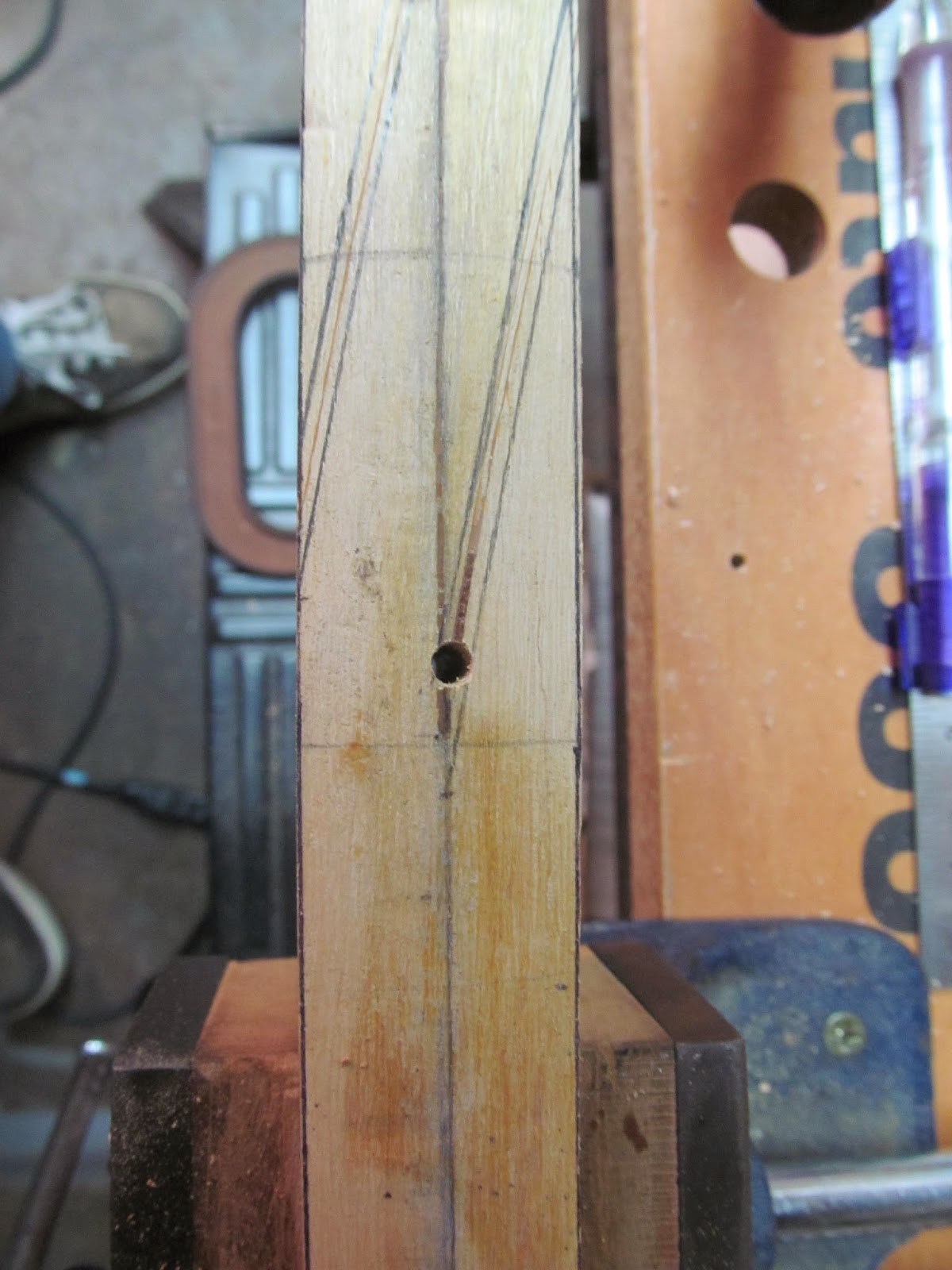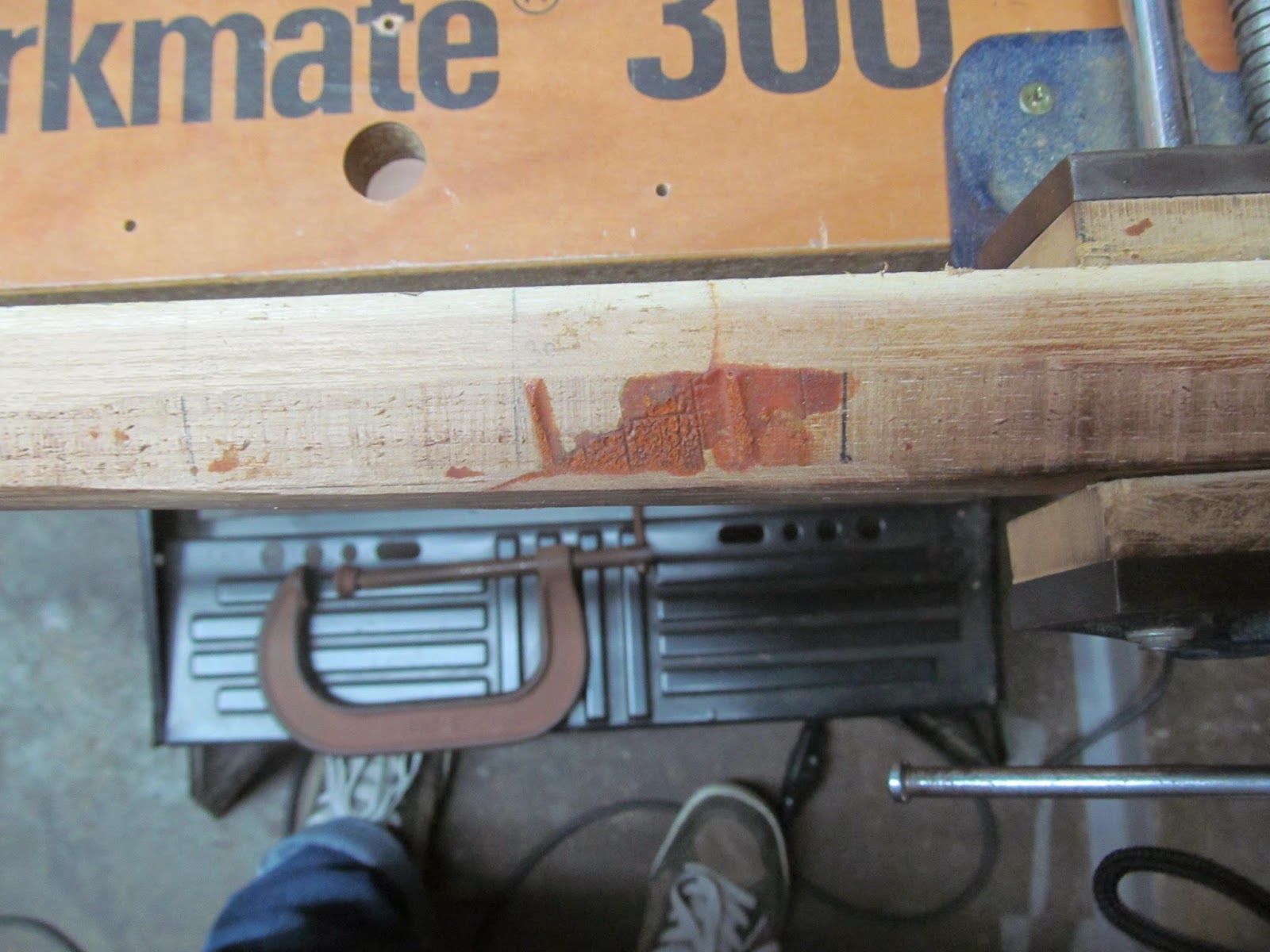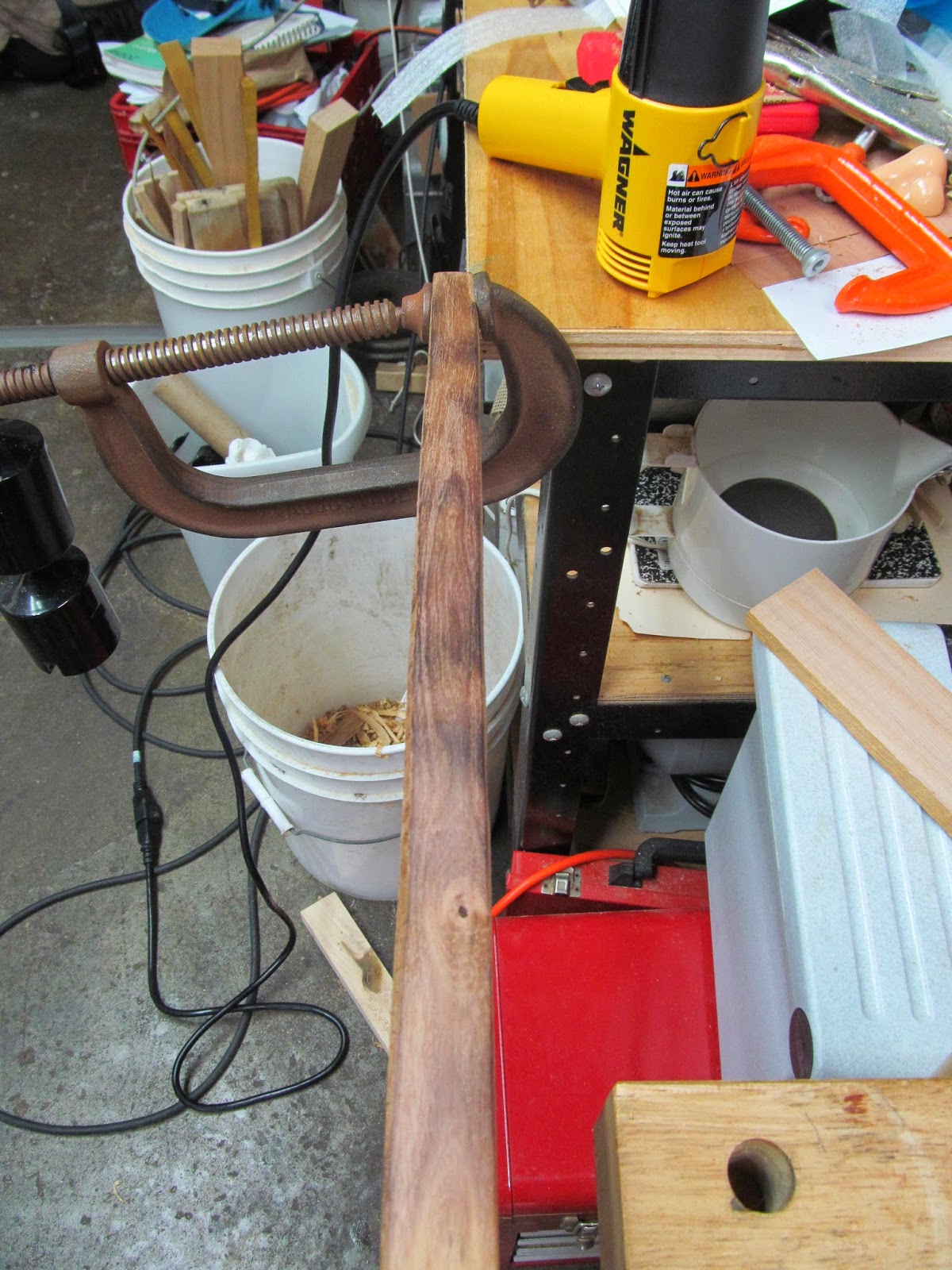This series of posts is really a sequel to my "Driftwood" series describing the making of a sister bow from the salvaged offcuts of that project.
In the process of getting to a thicker growth ring and a usable length from the basket-case osage piece Jarrod gave me (which yielded the short selfbow, "Driftwood"), I removed a large, flattish section of the outside of the osage (including some sapwood) by using the bandsaw. I actually had to go down a little more than a half inch deep (if you remember from
this post, the stave had already been worked down through several layers on one end), and the resulting offcut was great than 1/2" thick and a little over 2" wide. I couldn't very well throw the piece away, so I decided to see if I could get a bow out of it by recutting and splicing, and backing it with bamboo. Here's a bit of information about what I'm working with:
First, the 9" bow handle section was removed from one end of the offcut. One can see a trace of sapwood in the photo below. This is probably the best piece of wood out of the entire original stave! I thought it would be cool to be able to incorporate more of the stave back into the bow, so this section will make its way into the handle.
Also shown is the remaining section (original stave belly side, which will end up being the back gluing surface -- more in the next paragraph), already sawn into two pieces, about 38" in length and a little over 1" wide at the widest end (the narrower end tapers to 3/4"). You can probably also see the extreme coloring in this osage piece -- lots of red streaks. One of the major ones was bad in the section that eventually became "Driftwood," but these seem pretty solid. At any rate, they'll captured in the interior of the bow near the bamboo back, far away from the compression of the belly where they could do real harm.
The original stave, as I mentioned in the post "
Driftwood part 1" was pretty well worked down in odd places on the back when I first got it. Normally I would try to orient flatsawn grain so that the original stave back would be next to the bamboo backing and the original stave belly would be the bow's belly. In this case, because there is so little wood to work with and because the the back was in such poor shape, I'll need to make the stave back into the new bow's belly with the hope that all of the bad spots will come off in the tapering and tillering. You can see the spots in the photos below. They are incredibly dark, as the original stave had been sitting around for some years and the exposed wood had oxidized. It's a beautiful color -- and the bright yellow of the freshly cut osage gives you a real appreciation for just how much the color changes over time!



It's probably not apparent from the pictures above just how marginal the wood is in places. The center photo shows a fairly deep cut that looks like the back of the stave encountered a radial saw! I'm really hoping that most of that will come out in the tapering and tillering -- but it's going to be close. The bottom picture shows a nice void in the middle of the stave.
Of note: Orienting the back of the stave toward the belly of the bow in the glue up does cause the rings to travel in the same plane as the eventual radius of the belly, creating the potential problem of having large sections of soft earlywood exposed, which could weaken the bow or cause hinging. However, I'm at least aware of the problem going in, so I'll know to look for it and correct for it wherever / whenever possible.
As a further appreciation for just how marginal this wood is, I've taken a couple of photos of the sides. These were the original sides of the stave, and they had all sorts of sections missing. I'm not sure that the photos do it justice. For example, what looks like 1 3/8" width on the sawn section is really reduced to 1" of usable wood once these wood voids are accounted for...
In case you are wondering about the scrawled "NOT" on the side of the left-most piece of wood in the first picture above, it was a note to myself when preparing to cut the
original stave on the bandsaw. One side of the stave had some good relatively flat spots that traveled well on the bandsaw table and allowed the stave to be stable, whereas the other side had all sorts of dips that spelled trouble. Though it was fairly obvious which was which, I did not want to leave anything to chance, so I wrote the word "NOT" to remind me not to use that side against the saw's table. I hate to think that its vestige might be a sort of prophecy, telling me not to attempt to salvage this wood as a bow!
To conclude this post, I guess I should explain a little bit about the name. I was telling my friend Nick about the "Driftwood" bow I was working on and how I thought I might have enough for a second bow. I was casting about for a potential name. "Firewood" had made the list, as it was a) appropriate! and b) reflected the spirit of the red streaks I kept finding, but Nick suggested "Zatara," the name given to Edmond Dantes in the movie version of
The Count of Monte Cristo. The name was supposed to mean "driftwood" in the movie (a search on the 'Net reveals influences of Italian, Spanish, and Arabic, and it might actually mean "raft"), though there is this tidbit from
one of the Yahoo! Answers pages:
Zatara is a surname. The most famous Zatara was a magician that died on the Titanic. Shortly after his death, ther were a few jokes that came about. The most famous that stuck was: The Great Zatara was performing on the Titanic. One day a man with a parrot was in the audience. This parrot started to heckle The Great Zatara. Parrot voice: “Browk, it is in his hat!” Parrot voice: “Browk, it is his hand!” Parrot voice: “Browk, it is his pocket!” That night the boat hits an ice berg and sinks. The Great Zatara wakes up on a piece of driftwood with the Parrot. Two days go by with the two of them just staring at each other – really glaring! Then the Parrot says, “Ok, I give, Where’s the boat?” The producers of the movie The Count of Monte Cristo heard that joke and gave tribute to The Great Zatara by giving the name to Edmond Dantes and changed it to mean driftwood. (There are ancestors of The Great Zatara that have kept the name. They are mostly in Ireland.)
Regardless of whether or not it is a real word, I liked the connection to the name of its sister bow, and that making a working bow out of this other piece of "driftwood" is going to take some magic. That, and I already promised Nick I would make him a bow, and this might as well be it. (Unless it doesn't turn out!)





































